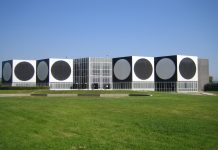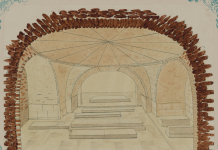The Cartesian skyscraper is naked.
The top and bottom of the original Manhattan model are amputated; the middle part is freed from the “old-fashioned” stone cladding, taken into glass and stretched for 220 meters.
This is exactly the rational skyscraper that the titled Manhattan sages allegedly wanted to build and from which they actually kept as far away as possible. The false goals of Manhattan architects – pragmatism, efficiency, rationality – completely captured the consciousness of the European.
“When you say a skyscraper, you mean offices, which, in turn, means businessmen and cars…” Le Corbusier’s skyscrapers are business and that’s all. The absence of a foundation (there is no place for Murray gardens) and a top (there is no place for the seductive promises of competing realities), an elegant cross-shaped plan that opens access to merciless sunlight – all this prevents the spread of any forms of social relationships that began to conquer Manhattan floor by floor. Having stripped off the protective architectural shell that created the conditions for the ideological hysteria of the interior to flourish, Corbusier cancels the great lobotomy.
He advocates honesty on such a scale that it can only be achieved at the cost of absolute banality. (Some popular types of social activity can’t stand the daylight.) There is no place for Manhattan technology fantastic. For Corbusier, the use of technology as a tool and an imaginative expander is abuse. For him, who worshipped the myth of technology from distant Europe, technology itself is fantastic. It must remain virginally immaculate and can only be used in its purest form – a totem, and nothing more.
The glass walls of a horizontal skyscraper enclose an absolute cultural void.



















